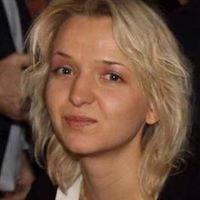Marcela Menachem Zoufala
Charles University, Prague, Faculty of arts, Department Member
Jewish life in Europe has undergone dramatic changes and transformations within the 20th century and also the last two decades. The phenomenon of the dual position of the Jewish minority in relation to the majority, not entirely unusual... more
Jewish life in Europe has undergone dramatic changes and transformations within the 20th century and also the last two decades. The phenomenon of the dual position of the Jewish minority in relation to the majority, not entirely unusual for Jewish Diaspora communities, manifested itself most distinctly on the European continent. This unique Jewish experience of the ambiguous position of insider and outsider may provide valuable views on contemporary European reality and identity crisis. The book focuses interalia on the main common denominators of contemporary Jewish life in Central Europe, such as an intense confrontation with the heritage of the Holocaust and unrelenting antisemitism on the one hand and on the other hand, huge appreciation of traditional Jewish learning and culture by a considerable part of non-Jewish Europeans. The volume includes contributions on Jewish life in central European countries like Hungary, the Czech Republic, Poland, Austria, and Germany.
Research Interests:
Research Interests:
Research Interests:
Research Interests:
Research Interests:
Celostni rozpěti antropologie odraži obsah Antropologickeho slovniku. Specifikou slovniku je jeho originalni koncepce, vymykajici se vsem obdobným pracim, ktere byly dosud na toto tema ve světě vydany. Slovnik byl programově budovan jako... more
Celostni rozpěti antropologie odraži obsah Antropologickeho slovniku. Specifikou slovniku je jeho originalni koncepce, vymykajici se vsem obdobným pracim, ktere byly dosud na toto tema ve světě vydany. Slovnik byl programově budovan jako integralni databaze poznatků, jichž bylo v oblasti věd o clověku, spolecnosti a kultuře dosaženo v kontextu vývoje antropologie a jejich subdisciplin, výzkumných metod, paradigmat a teorii. Na rozdil od standardnich anglosaských slovniků vsak rozsiřuje tematický zaběr o oblast krasne literatury a uměni. Jeho soucasti se stala komplexni řada hesel věnovaných oblasti umělecke kultury, kterou tradicni antropologie do znacne miry opomijela, takže vydani tohoto slovniku lze oznacit za přispěvek k rozvoji dosud malo celosvětově zpracovane antropologie uměni.
Research Interests:
Research Interests:
Research Interests:
Research Interests:
Jewish life in Europe has undergone dramatic changes and transformations within the 20th century and also the last two decades. The phenomenon of the dual position of the Jewish minority in relation to the majority, not entirely unusual... more
Jewish life in Europe has undergone dramatic changes and transformations within the 20th century and also the last two decades. The phenomenon of the dual position of the Jewish minority in relation to the majority, not entirely unusual for Jewish Diaspora communities, manifested itself most distinctly on the European continent. This unique Jewish experience of the ambiguous position of insider and outsider may provide valuable views on contemporary European reality and identity crisis. The book focuses interalia on the main common denominators of contemporary Jewish life in Central Europe, such as an intense confrontation with the heritage of the Holocaust and unrelenting antisemitism on the one hand and on the other hand, huge appreciation of traditional Jewish learning and culture by a considerable part of non-Jewish Europeans. The volume includes contributions on Jewish life in central European countries like Hungary, the Czech Republic, Poland, Austria, and Germany.
Research Interests:
What is the nature of interactions between Jews and Muslims in contemporary Dubai, Berlin, and Warsaw? The purpose of the three presented case studies is to evaluate the state of affairs and identify newly emerging trends and patterns in... more
What is the nature of interactions between Jews and Muslims in contemporary Dubai, Berlin, and Warsaw? The purpose of the three presented case studies is to evaluate the state of affairs and identify newly emerging trends and patterns in the given trans-urban context. The methodology is based on qualitative anthropological research, emphasising an emic perspective that centralises respondents’ own lived experiences and worldviews. The main research’s findings made evident that interactions between Muslims and Jews in each examined location are, to various extents, acknowledged, and in some cases, also embody a formative part of public discourses. Perhaps the most visible manifestations of these relations are represented by the ambitious interfaith projects that were recently established in each geographical area in focus. The Abrahamic Family House (UEA), The House of One (GE), and The Community of Conscience (PL) reveal the aspirations of multi-faith religious leaders to overcome p...
Research Interests:
8th Annual Conference on Israel Studies
Democracy in Challenging Times:
Israel, Europe, and the World
Democracy in Challenging Times:
Israel, Europe, and the World
Jewish life in Europe has undergone dramatic changes and transformations within the 20th century and also the last two decades. The phenomenon of the dual position of the Jewish minority in relation to the majority, not entirely unusual... more
Jewish life in Europe has undergone dramatic changes and transformations within the 20th century and also the last two decades. The phenomenon of the dual position of the Jewish minority in relation to the majority, not entirely unusual for Jewish Diaspora communities, manifested itself most distinctly on the European continent. This unique Jewish experience of the ambiguous position of insider and outsider may provide valuable views on contemporary European reality and identity crisis. The book focuses interalia on the main common denominators of contemporary Jewish life in Central Europe, such as an intense confrontation with the heritage of the Holocaust and unrelenting antisemitism on the one hand and on the other hand, huge appreciation of traditional Jewish learning and culture by a considerable part of non-Jewish Europeans. The volume includes contributions on Jewish life in central European countries like Hungary, the Czech Republic, Poland, Austria, and Germany.
